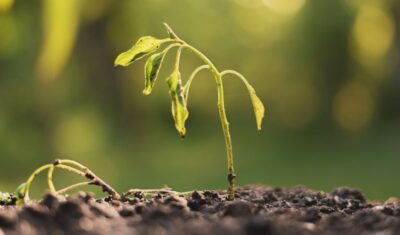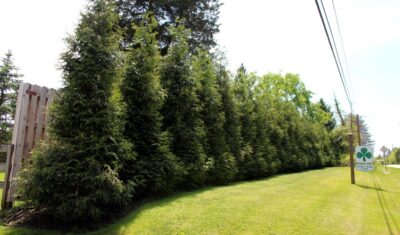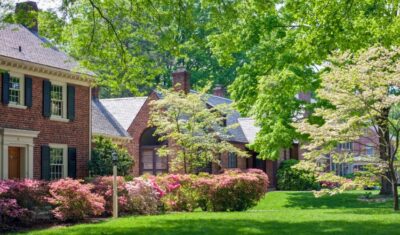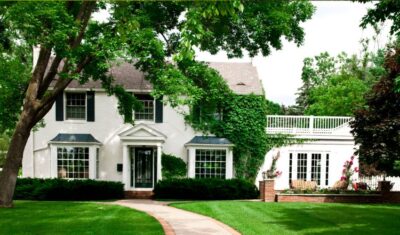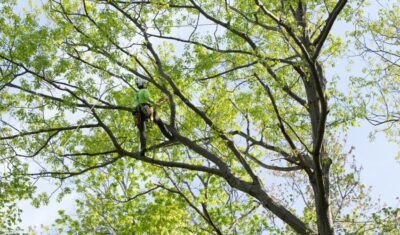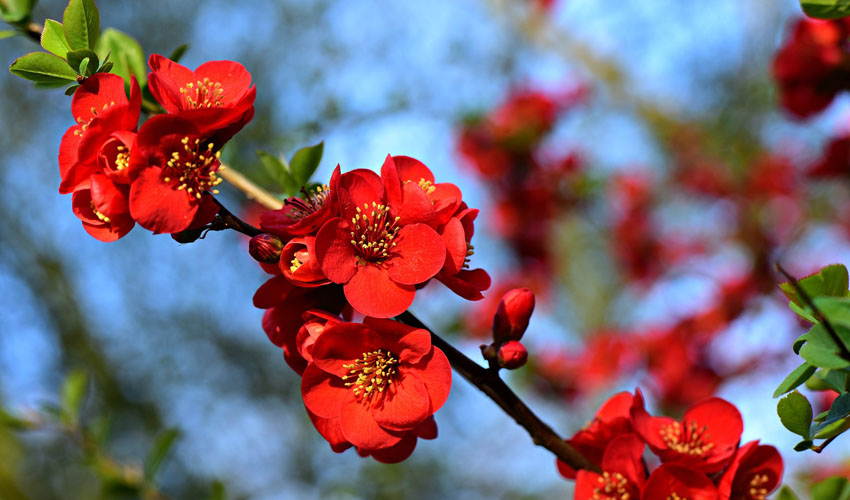
Are your shrubs looking overgrown or crowded? Did they only produce a few flowers or fruit last year? If so, it’s probably time for rejuvenation pruning!
In this article, we answer all of your questions about this special pruning technique so you’ll know whether or not it’s a good option for your own shrubs.
What is rejuvenation pruning?
Periodically, large, deciduous shrubs need more extensive pruning than they usually receive. This is called rejuvenation pruning, and it involves removing branches all the way down to their base. That’s right – the entire shrub is cut off just above ground level or up to 6” to 12” above the soil, depending on the type of shrub.
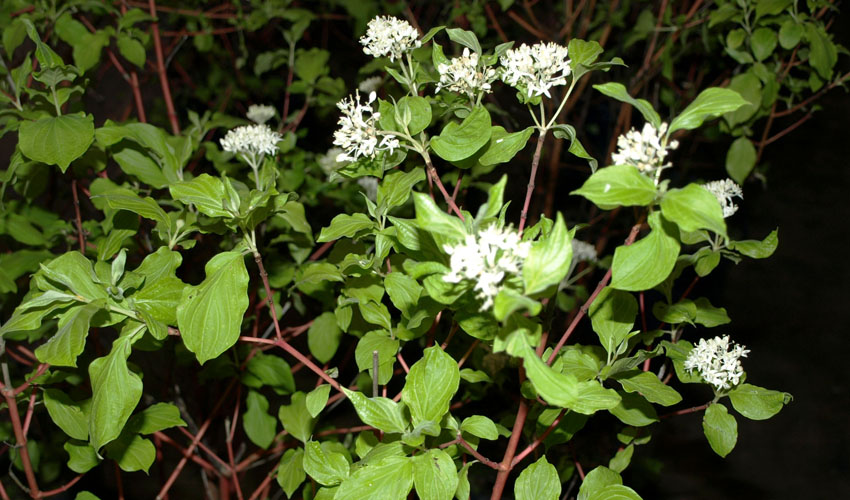
Red twig dogwood can benefit from rejuvenation pruning
Why is rejuvenation pruning done?
This type of extreme pruning is done to “rejuvenate” the health of shrubs that have become too overgrown or woody to look their best or to thrive. Without regular pruning, shrubs can get crowded, look misshapen, produce fewer flowers, and develop a bare interior without leaves. At that stage, regular pruning is not enough to correct the problems.
What are the benefits of cutting a shrub to the ground?
When done to the right type of shrub (more on that below), rejuvenation pruning results in:
- a smaller plant that flowers more profusely,
- new stems with much brighter color (such as with red-twig dogwood), and
- a shrub that’s easier to control with regular thinning.
The new, healthy growth and more compact shape also improve the shrub’s overall appearance.
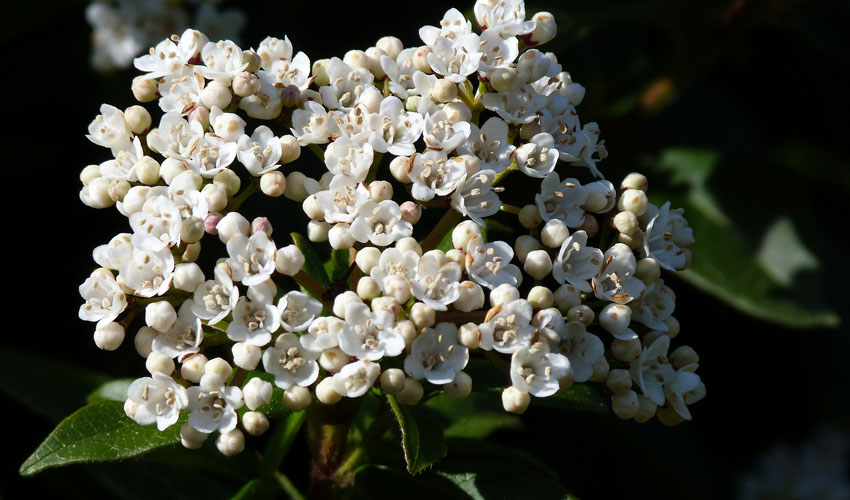
Viburnum flowers can bloom more profusely after a rejuvenation pruning
What’s the best time to do rejuvenation pruning? Does it matter?
Late winter or early spring are the best times to perform rejuvenation pruning on a shrub. The exact time depends on the weather, but here in northeast Ohio it’s usually in February or March.
Wait till the very cold temperatures are over and then prune before new growth starts to appear.
How often should I do rejuvenation pruning on a shrub?
Rejuvenation pruning is typically done only every three to five years, usually when the shrub starts to look overgrown or stops flowering. Cutting off all the stems and leaves is a huge stressor to the plant so it’s best not to do it too often. Stressed shrubs are more susceptible to disease and pests plus, when cut back too frequently, the shrub may become too weak to fully recover.
Are there any shrubs that should NOT be pruned this way?
Hard pruning can be damaging or fatal to the wrong plant so let’s cover what shrubs don’t need rejuvenation pruning, and why.
DON’T use rejuvenation pruning techniques on:
- Any shrub in poor health or recovering from insect damage, disease, or water stress. Leave fragile shrubs to regain their vigor, and be sure to provide enough irrigation and organic fertilizer to help them along.
- Evergreen shrubs, which have different pruning requirements. If you cut an evergreen down to its base, it will not re-grow, and you’ll have a stump to dig out.
- Shrubs that are woody and overgrown, with leaves and new growth appearing only at the very ends of branches. Shrubs with 1/3 or more of their mass made up of dead twigs and branches need incremental pruning over time to slowly coax new growth along its stems (although that’s not always possible – sometimes it’s better to simply remove the shrub).
- Shrubs with a single main stem or leader. Any shrub that’s like a small tree, with branches above a vertical stem, should be pruned differently. If you prune off that single stem, it’s all over.
- Finally, if you’re pruning a cultivar that’s budded onto a different rootstock, don’t cut it to the ground. The regrowth will be from the rootstock, not the cultivar.
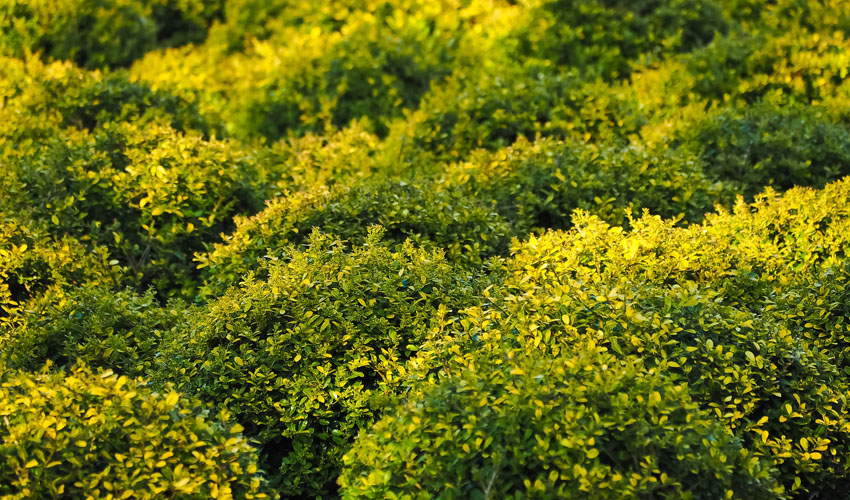
Do NOT use rejuvenation pruning on evergreen shrubs
Which shrubs respond best to rejuvenation pruning?
Rejuvenation pruning is for twiggy, multi-stem shrubs, such as:
- red-twig dogwood,
- viburnum,
- spirea,
- flowering quince,
- forsythia,
- witch hazel,
- beautyberry (prune down to 12 inches only),
- oakleaf hydrangea,
- lilac, and
- honeysuckle.
Consider rejuvenation pruning if you have an otherwise healthy, multi-stem shrub that:
- looks overgrown,
- has lost its usual structure or form,
- doesn’t flower as much as it used to, or
- is crowded with dead twigs and branches.
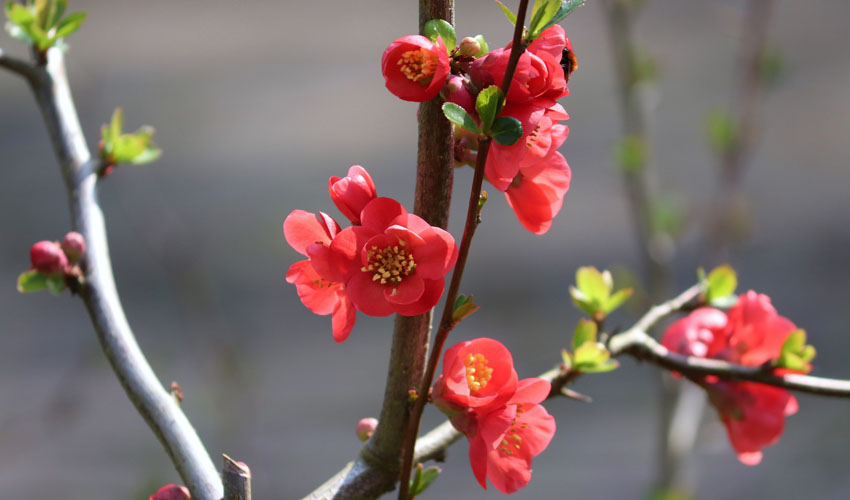
Flowering quince can benefit from rejuvenation pruning
How does rejuvenation pruning work?
To rejuvenate means to “make young again.”
Depending on species, juvenile plant growth can look very different from mature growth. Some shrubs are most valued for their juvenile growth habit or bark color, or their leaves and flowers are more prolific on young growth. For these shrubs, rejuvenation pruning works by bringing out a new, young shrub from its mature base.
When multiple branches of a shrub are cut back to their above-ground base, their larger, below-ground structural base responds by sending up new branches. It’s these branches that start a new cycle of growth.
Note: Cutting back to the base of stems can mean just that, or it can mean leaving 6”- 12” of stem. This depends on the species.
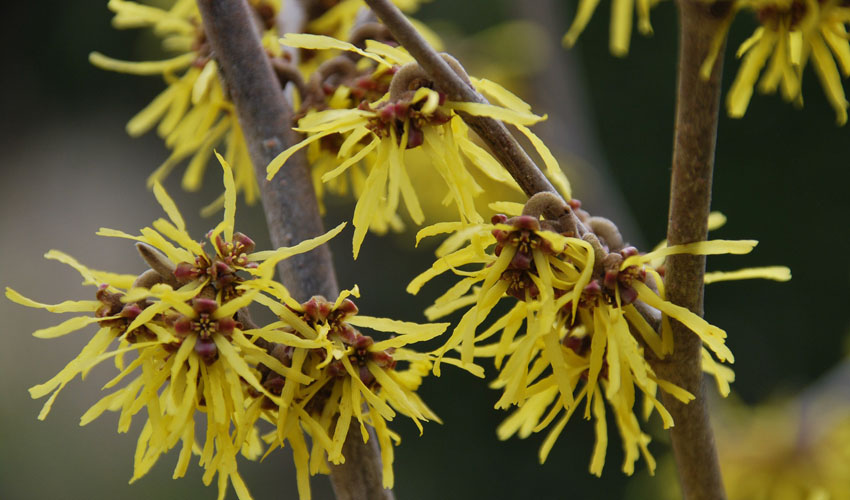
Witch hazel can benefit from rejuvenation pruning every few years
How is rejuvenation pruning done?
Depending on the size of the branches you’ll be pruning, you can use hand clippers, loppers, or a saw. Most hand clippers can handle branches up to about 3/4” around, loppers can cut branches up to 1 ½ – 2”, and larger branches will need a pruning saw. You want your tool to be strong enough to make clean, even cuts all the way through the branch you’re cutting.
Check around the base of your shrub for weed barrier fabric, mulch, or irrigation lines. Remove any you find so they don’t interfere with your pruning cuts or the new growth that will soon emerge.
If your shrub has large or arching branches that obscure the base, you can cut those back part way first to make some room.
When you’re ready to prune, make a cut at the base of the branch or at a growth point.
Before getting to work, check out these pruning mistakes so you’ll know what to avoid.
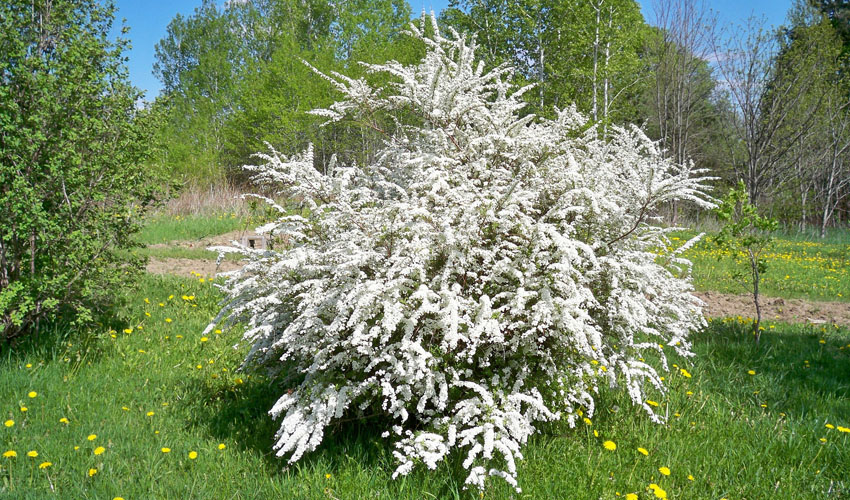
A bridal wreath spirea in bloom
Do shrubs need special care after this type of pruning?
After rejuvenation pruning, give your shrub a little extra care, such as adding a layer of compost or replenishing mulch (here’s how to use mulch correctly), and make sure it has plenty of water. Keep a close watch for any signs of pests or disease, as these can be particularly damaging as the shrub recovers. And don’t use synthetic fertilizer; it’ll only force spindly new growth instead of nourishing the shrub.
In a short while, you should see new growth starting to sprout from the base, followed by healthy new leaves and flowers.
NEED A HAND?
Not sure if you’re pruning the right shrubs? If they’re healthy enough for rejuvenation pruning? Or if you’re cutting them back correctly?
We’re here to help!
Give us a call at 440-564-1374 for a consultation with one of our Certified Arborists or to schedule rejuvenation pruning for your shrubs. You can even request an estimate with this online form.
Book Your Rejuvenation Pruning
Contact Independent Tree to schedule your rejuvenation pruning. We have the tools, experience, and knowledge to correctly perform this type of pruning. You'll have healthy and beautiful shrubs in no time!Recent Articles
Topics
About The Author

STAY IN THE LOOP
WITH OUR
LATEST UPDATES
"*" indicates required fields

